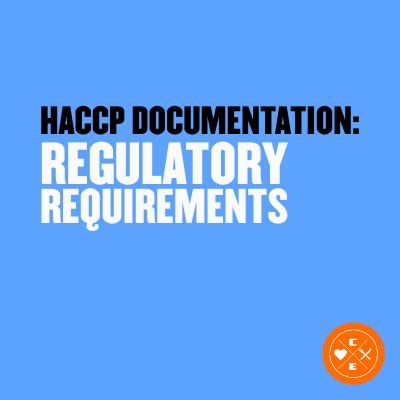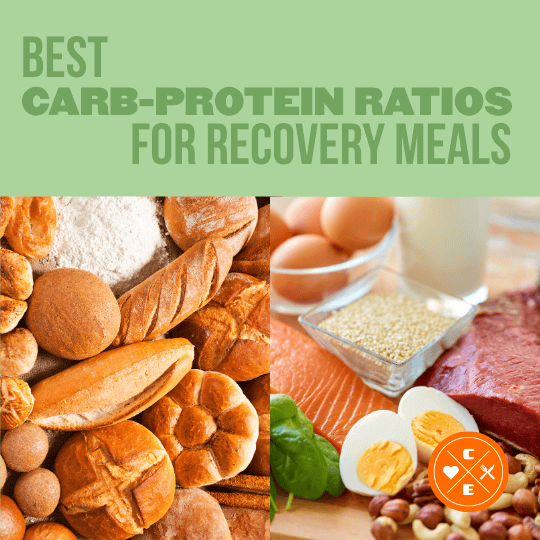HACCP Documentation: Regulatory Requirements

Jason Nista
Nutrition
09/05/2025 10:26am
14 minute read
Table of Contents
HACCP documentation is the backbone of food safety compliance. It ensures food businesses identify, monitor, and address safety risks at every step of their operations. This system is required by law and revolves around seven principles, including hazard analysis, monitoring, and record-keeping.
Why it matters:
- Protects public health by preventing foodborne illnesses.
- Avoids fines, recalls, lawsuits, and damage to brand reputation.
- Builds trust with customers through rigorous safety protocols.
Key takeaways:
- Regulatory Agencies: The FDA oversees seafood and juice industries, while the USDA focuses on meat. Each requires detailed HACCP plans and records.
- Documentation Essentials: Includes hazard analysis, process descriptions, flow diagrams, monitoring logs, corrective action records, and verification documents.
- Record Standards: Must include timestamps, product details, and signatures. Retention periods vary by product type.
- Technology's Role: Automated tools like temperature sensors and barcode scanning simplify compliance and reduce errors.
- Staff Training: Employees must understand their roles in monitoring, documenting, and maintaining food safety.
HACCP documentation is non-negotiable for food safety and regulatory compliance. By using detailed records and modern tools, meal delivery businesses can uphold safety standards while maintaining customer trust.
HACCP ep. 15 - DOCUMENTATION & RECORDS (HACCP step 12)
Required Elements for HACCP Documentation
Building on the previously discussed HACCP principles, certain documentation elements are non-negotiable for compliance. These components - ranging from summary tables to flow diagrams - are vital for demonstrating adherence to safety standards and safeguarding public health. For operations like Clean Eatz Kitchen, maintaining these records ensures readiness for FDA and USDA inspections. Let’s break down each required element and its role in the HACCP framework.
Key Documentation Components
A functioning HACCP system revolves around four primary elements: HACCP plan summary tables, hazard analysis worksheets, process descriptions, and flow diagrams.
- HACCP plan summary tables: These provide inspectors with a clear snapshot of each critical control point (CCP), outlining associated hazards, critical limits, and monitoring procedures.
- Hazard analysis worksheets: These worksheets capture a detailed assessment of potential biological, chemical, and physical hazards at every step of your process. They also explain why each CCP was identified and how it mitigates specific risks.
- Process descriptions: These written explanations map out your operation from start to finish. They should include details about ingredient sourcing, preparation, cooking, cooling, packaging, and delivery. The goal is to make your system understandable to someone entirely unfamiliar with it.
- Flow diagrams: These visual tools illustrate your entire process, step by step, and highlight where each CCP occurs. They must accurately reflect your real-world operations, and any changes in your procedures require immediate updates to these diagrams and related documentation.
Record Keeping Standards
Accurate record keeping is just as important as documenting your procedures. It’s the backbone of operational verification and regulatory compliance.
- CCP monitoring records: These logs capture real-time data at each CCP, proving that safety measures are being followed. To meet regulatory standards, they must include specific details like time, date, product information, and the operator’s initials or signature.
- Corrective action logs: These records document every deviation from critical limits, along with the steps taken to address the issue. For example, if a CCP record shows a temperature below 167°F, the log should include details about the corrective action, product disposition, and investigation into the root cause.
- Training records: These verify that employees understand their responsibilities within the HACCP system. They should include names, training dates, topics covered, and proof of competency. Regular refresher training should also be documented.
- Verification documentation: This proves your HACCP system is functioning as intended. It includes records of equipment calibration, internal audits, system validation, and reviews of monitoring and corrective action logs.
Required Information for Each Record
The table below outlines the essential details that must be included in specific records:
| Record Type | Required Information |
|---|---|
| CCP Monitoring Records | Form title, organization name and location, time and date of monitoring, product details (type, package size, processing line, product code, batch numbers, lot codes), observations or measurements, critical limits, corrective actions, operator and reviewer signatures |
| Deviation and Corrective Action Records | Product identification, description of deviation (what happened, when detected, which CCP was affected, impacted products), actions taken, product disposition, root cause analysis, preventive measures, responsible person, evaluation results, verification activities |
| Verification Records | In-house inspections, hazard analysis validation, HACCP plan validation, calibration of monitoring equipment, equipment testing, verification activity results, record review logs, microbiological testing results |
For example, if cold storage temperatures exceed 40°F, the corrective action record must detail adjustments made to refrigeration, assess product safety based on time and temperature exposure, and investigate the cause - whether it’s a door left open or a mechanical failure.
Product identification is another critical element. It should be detailed enough to trace specific items through your system, including production dates, batch codes, and lot numbers. Similarly, equipment identification ensures traceability when multiple pieces of similar equipment are in use. Include serial numbers or equipment IDs to link records to specific machines. Accurate time and date stamps further enhance accountability by pinpointing when monitoring occurred and when records were reviewed.
While the level of detail required may seem overwhelming, each piece of documentation plays a vital role in ensuring food safety and meeting regulatory demands. Beyond compliance, these records provide valuable insights for continually refining and improving your food safety processes.
Record Storage, Review, and Electronic Requirements
Efficient record management is a cornerstone of compliance in food safety operations. Regulatory agencies require records to be stored, reviewed, and maintained according to specific guidelines. For meal delivery services, having systems in place to keep records accessible and intact for the entire retention period is critical.
How Long to Keep Records
Retention periods depend on the type of product and the regulations governing it. Always confirm these requirements with the FDA or local authorities. Records should be stored in a way that allows for quick and easy retrieval during inspections or audits.
Clearly defined retention timelines are key to staying compliant.
Required Review Procedures for HACCP Records
HACCP records need to be reviewed before shipping to verify that all critical control points (CCPs) were monitored and any deviations were addressed. The reviewer must be properly trained and authorized to stop shipments if necessary.
Most organizations set up a routine review schedule that includes both batch-specific checks and broader system evaluations. Each review should be documented with the date, the reviewer's signature, and notes on any corrective actions taken to resolve issues. Adding trend analysis to these reviews can help pinpoint recurring problems or potential risks, keeping the HACCP system effective and adaptable over time.
These practices not only support compliance but also strengthen digital record management strategies.
Electronic Record Requirements
With the growing reliance on digital tools in food production, it’s essential to ensure electronic HACCP records meet FDA 21 CFR Part 11 standards. This involves validating systems, safeguarding data integrity with audit trails and secure access controls, and performing regular backups with documented recovery protocols.
For operations using both electronic and paper records, it’s important to confirm that both formats are complete and consistent. Audit trails should log all data entries, changes, and deletions, including timestamps and user identifications, ensuring that records are always inspection-ready.
sbb-itb-1989a25
HACCP Documentation Guidelines for Meal Delivery Operations
Meal delivery businesses have their own set of challenges when it comes to HACCP documentation. From monitoring temperature control to managing ingredient sourcing and navigating complex supply chains, these operations demand meticulous record-keeping at every step. Building on the core HACCP principles, these guidelines address the specific needs of meal delivery services. To meet these demands, a reliable, technology-supported documentation system is essential.
Using Technology for Documentation
Technology has transformed HACCP documentation, making it more efficient and accurate. Modern software connects temperature sensors to cloud platforms, enabling seamless monitoring of critical control points without human error.
Take automated temperature monitoring, for instance. These systems can log freezer temperatures every 15 minutes, instantly flagging any readings outside acceptable ranges. When paired with inventory management software, they create traceable records that link specific temperature conditions to individual meal batches, ensuring accountability.
Mobile apps with barcode scanning add another layer of precision. They provide time-stamped records of ingredients, including supplier details, lot numbers, and expiration dates. This level of tracking is invaluable during product recalls, allowing companies to quickly pinpoint affected items.
Cloud-based storage systems ensure all records are inspection-ready. These platforms often include backup protocols and user access controls that align with FDA requirements for electronic records. By integrating with production schedules, shipping logs, and customer delivery data, these systems create a comprehensive view of the entire operation.
Training Staff for Compliance
Accurate HACCP documentation starts with well-trained staff who understand their roles in maintaining food safety. Training programs must go beyond general food safety rules, focusing on specific record-keeping responsibilities and the real-world consequences of incomplete or inaccurate documentation.
Each team member needs to know their part. Production staff should be trained to log temperatures, times, and any corrective actions at critical control points. Quality assurance staff must understand how to review records and when to halt production if safety concerns arise. Management teams need to be familiar with document retention rules and inspection processes.
Hands-on training with actual forms and systems is crucial. Employees must not only know what to record but also how to recognize when corrective actions are needed and how to document those actions properly. They should also be prepared to escalate issues and maintain record accuracy during emergencies.
Regular refresher courses help reinforce these skills and keep staff updated on regulatory changes. Many meal delivery businesses hold quarterly training sessions to address common documentation errors and introduce new tools or processes. These sessions also provide a chance to review and refine existing practices.
To ensure training is effective, companies should document who was trained, when, and how their competency was verified. This creates a clear record of the operation's dedication to food safety compliance.
While technology simplifies data collection, it’s the trained staff who ensure that the information is accurate and reliable.
Documentation Examples for Meal Delivery
Meal delivery operations require detailed and specific documentation tailored to their unique workflows. Temperature logs are a top priority, covering the entire process from receiving ingredients to delivering the final product.
Ingredient traceability is another critical area. For businesses that source from multiple suppliers and create composite meals, records must link supplier certificates of analysis to internal lot codes and finished product details. This ensures full traceability.
Sanitation records are equally important. These should document cleaning schedules, sanitizer concentrations, and verification test results for both food contact surfaces and packaging equipment. For automated packaging lines, additional records should cover equipment changeovers and allergen control procedures.
Corrective action documentation is especially relevant for temperature deviations during storage or transport. These records must detail the corrective steps taken and how the safety of the affected products was assessed.
Supplier verification records are vital, particularly for operations offering specialized meal plans like gluten-free options. These records should include measures to prevent cross-contamination and verify allergen control practices.
The goal is to design documentation systems that capture all necessary information without disrupting daily operations. Well-structured forms and user-friendly digital tools make it easier for staff to record accurate data, while automated systems handle routine monitoring. These practices not only protect public health but also ensure compliance with regulatory standards across every aspect of meal delivery operations.
Summary
HACCP documentation is the cornerstone of ensuring food safety - a structured and proactive approach that safeguards consumers while meeting regulatory demands.
Key Points on HACCP Documentation
A structured hazard control system is essential for successfully implementing HACCP. The seven principles of HACCP work as a cohesive unit, creating a safety framework that identifies and addresses potential hazards before they become issues.
Define measurable and scientific critical limits - like keeping freezer temperatures at 0°F or lower - to establish clear parameters for safe food handling and storage.
Ongoing monitoring and precise record-keeping are crucial to maintaining control over critical points in the process. Reliable data from monitoring activities provide a solid foundation for regulatory audits, recalls, or investigations.
Prerequisite programs, such as Good Manufacturing Practices, lay the groundwork for effective HACCP plans. Without proper sanitation, pest control, and employee hygiene measures, even the most thorough HACCP documentation cannot ensure food safety.
Next Steps for Meal Delivery Operations
To strengthen food safety practices, meal delivery businesses should evaluate their current documentation methods, identify areas for improvement, and enhance staff training.
Rather than creating separate systems, companies should aim for integrated documentation platforms. These platforms can connect temperature monitoring, ingredient tracking, sanitation records, and corrective actions into a single, streamlined system.
Invest in comprehensive staff training to ensure employees understand both the technical aspects of record-keeping and its role in protecting public health. Training should emphasize the importance of accurate documentation and how it ties into overall food safety.
Leverage technology to improve accuracy and efficiency. Tools like automated temperature monitoring, barcode scanning for ingredient tracking, and cloud-based storage systems reduce human error and make records easily accessible for regulatory purposes.
The benefits of thorough HACCP documentation extend beyond compliance. It minimizes regulatory risks, boosts operational efficiency, and builds trust with consumers. For meal delivery operations, prioritizing detailed documentation not only ensures food safety but also creates a competitive edge. At Clean Eatz Kitchen, this commitment to food safety and operational excellence is reflected in the use of advanced technology and rigorous training, ensuring the consistent delivery of safe, high-quality meals to customers across the nation.
FAQs
What are the key elements of a HACCP plan, and why are they important for food safety compliance?
A HACCP plan is built around several core components: conducting a hazard analysis, pinpointing critical control points (CCPs), establishing critical limits, implementing monitoring procedures, defining corrective actions, applying verification processes, and maintaining thorough records. Together, these steps create a structured system to identify and address potential food safety risks.
These elements are crucial for compliance because they proactively prevent hazards, ensuring food safety at every stage. By maintaining accurate documentation and following consistent procedures, businesses not only meet regulatory standards but also safeguard consumers by minimizing the chances of foodborne illnesses. This methodical approach is fundamental to upholding strong food safety practices.
How can technology improve HACCP documentation for meal delivery services?
Technology significantly improves HACCP documentation, bringing greater accuracy, efficiency, and clarity to food safety processes. With digital tools, businesses can benefit from real-time monitoring, automated compliance checks, and simplified record-keeping. This not only reduces the chances of human error but also saves valuable time.
For meal delivery services, practical solutions include AI-driven HACCP software that simplifies hazard analysis and documentation. Additionally, automated temperature sensors ensure food is stored at the correct temperatures. These tools enable companies to uphold strict food safety standards while keeping pace with regulatory demands in a fast-moving industry.
How can I effectively train my staff to maintain accurate HACCP documentation and meet regulatory requirements?
To help your team maintain accurate HACCP documentation and meet regulatory requirements, start by providing comprehensive training on HACCP principles. This includes covering key areas like hazard analysis and critical control points (CCPs). Stress the importance of detailed record-keeping for tasks such as evaluating hazards, monitoring CCPs, and implementing corrective actions.
It’s also important to offer regular refresher courses to reinforce knowledge and keep up with any regulatory changes. Combine this with hands-on practice and consistent supervision to ensure employees can confidently apply what they’ve learned. This method not only strengthens their understanding of compliance standards but also encourages accountability when it comes to maintaining accurate records.
Related Articles
Best Carb-Protein Ratios for Recovery Meals
14 minute read
How to Stick to Your Meal Plan When Life Gets Busy
7 minute read



